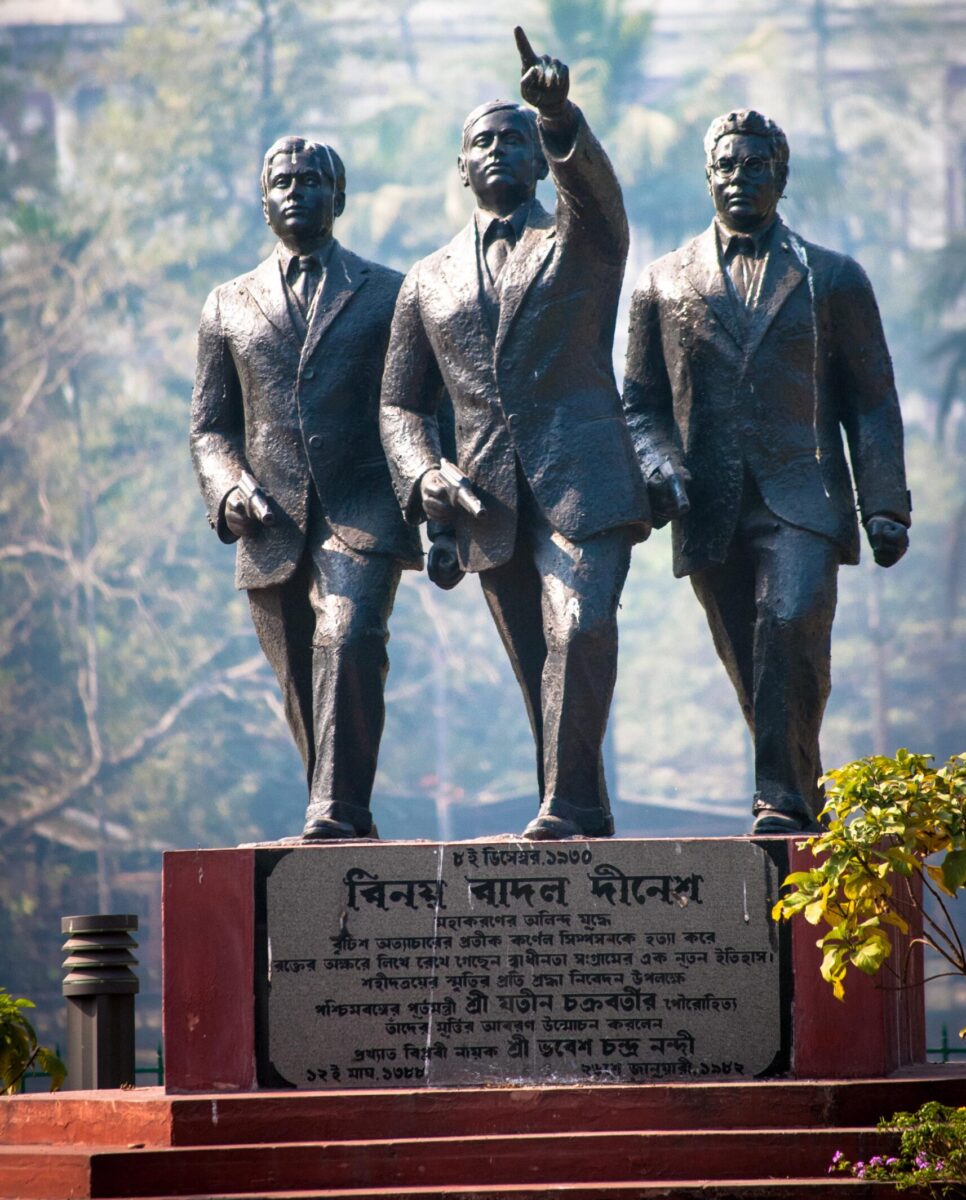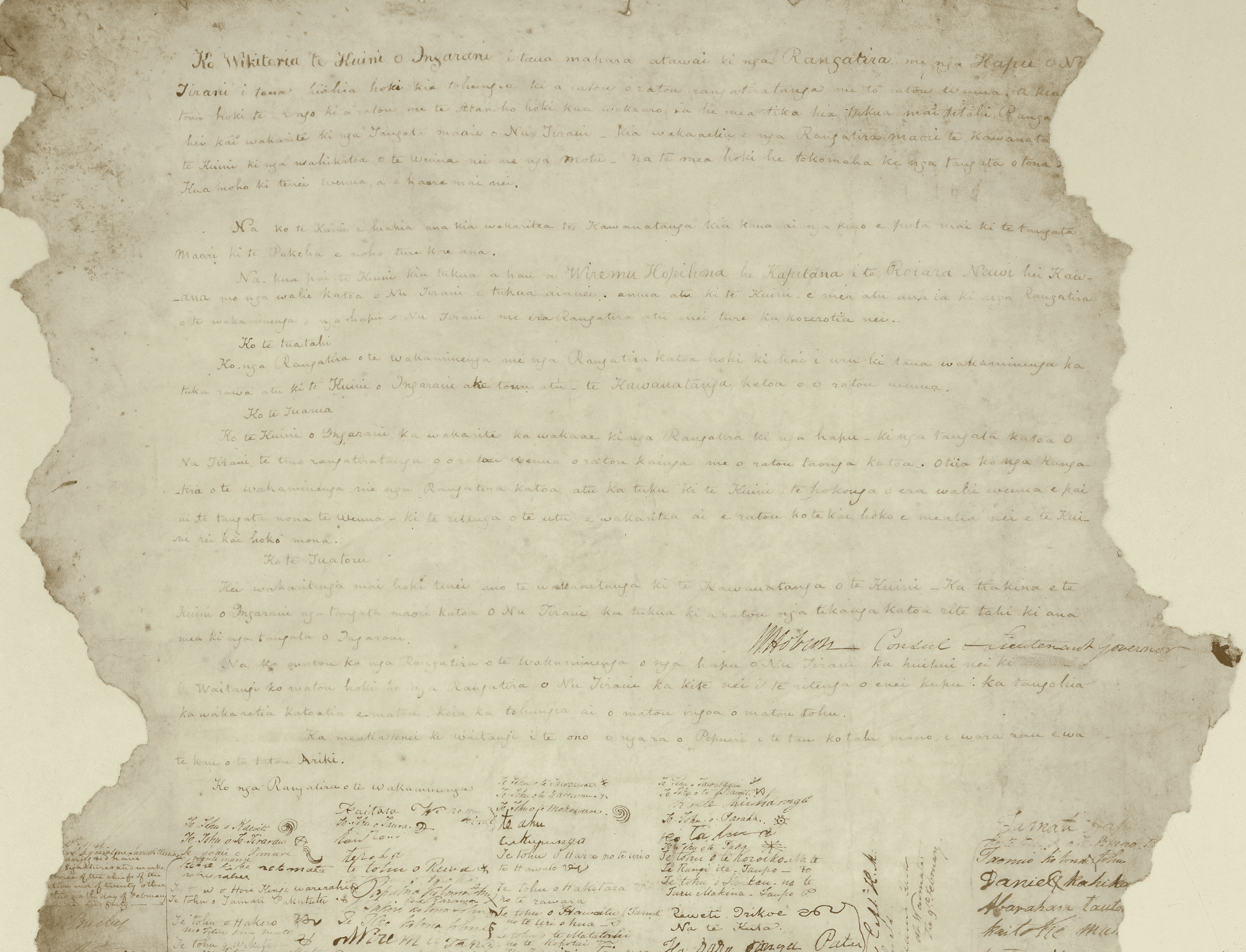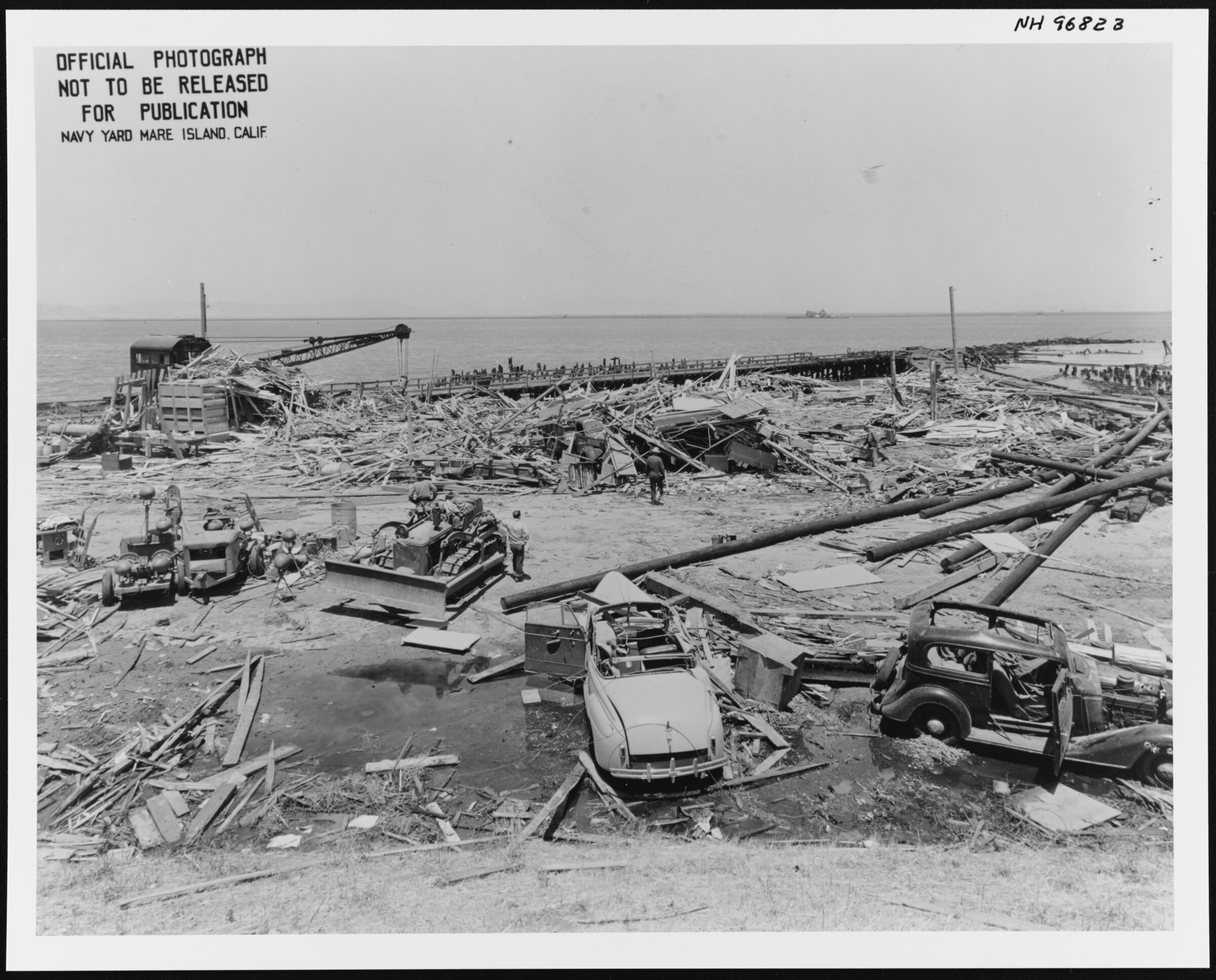Agnijug, or “age of fire,” is used in Bengali scholarship to denote the period of anticolonial revolutionary movements that took place from 1906 to 1935. Born and raised in Kolkata—the hotbed of such movements—with grandparents who were refugee migrants from East Bengal, I grew up hearing stories of the armed uprisings that the government-prescribed textbooks used by my school often omitted.

Today, a statue of revolutionaries Benoy Basu, Badal Gupta, and Dinesh Gupta stands near the Writers’ Building in Kolkata. Sujay25/Wikimedia Commons/CC BY-SA 4.0
To address this concern, contribute to a holistic narrative of the Indian freedom struggle, and bridge the gap between academic and oral histories, I founded Agnijug Archive, a digital oral history repository dedicated to preserving the stories of anticolonial Indian revolutionaries through interviews and archival material. In the three years of its existence, Agnijug Archive has collected more than one hundred interviews.
The project started on a summer afternoon in July 2022, when, taking a break from exam preparations, I decided to find a house in South Kolkata that I’d read about in a recent news report. In 1930, its owners, Malinabala and Kalicharan Ghosh, provided refuge to two adolescent boys, Ananda Gupta and Jiban Ghoshal. Regarded as “vicious terrorists” by the British colonial administration, Gupta and Ghoshal were on the run after participating in the Chittagong armory raid, part of a longer guerilla uprising that began on April 18, 1930, when Surya Sen led the Indian Republican Army force in laying siege to Chittagong. The coordinated rebellion that followed saw rebels take control of the town for four days, seizing key locations—from police lines and the armory to telephone and telegraph offices—cutting off communications, gathering weapons, and sparking a broader uprising. On April 22, a math teacher and 60 schoolchildren managed to defeat hundreds of British soldiers at the Battle of Jalalabad Hill. Twelve revolutionaries died, and the British endured significant (though undocumented) casualties.
By 1931, continuous guerrilla attacks took the form of targeted assassinations of government officials, including an assault on the European Club by a 21-year-old woman, Pritilata Waddedar, in September 1932. Regarded as the first female martyr in 20th-century Bengal, Waddedar hoped to inspire other young women to join—even die for—the same cause. (Her suicide note, describing her goals, can be found in Poulomi Saha’s An Empire of Touch, 2019.) But the movement gradually subsided after Surya Sen’s arrest and hanging in 1934.
The Chittagong Uprising is notable for the example it set of communal harmony. According to the 1931 census, Muslims accounted for 73.8 percent of the district’s total population, and Hindus composed 21.84 percent. Not only did the Indian Republican Army have Muslim participants—a rare phenomenon, since Bengali revolutionary circles were made up largely of upper-caste Hindus—but Chittagong also withstood British attempts to fuel communal riots in the district. In fact, Surya Sen remained in hiding for four years only because he was given shelter by local Muslim families.
The house I visited in 2022 is now owned by Shibshankar Ghosh, Malinabala and Kalicharan’s youngest son. Gathering the courage to ring his doorbell, I expected to be turned away. Instead, a three-hour discussion followed, in which Shibshankar, now in his 80s, shared his family’s account of the revolutionary movement in Bengal.
Shibshankar’s father was deeply involved in the anticolonial struggle, serving as secretary to Sarat Bose—a barrister, president of the Bengal Pradesh Congress Committee, and brother of Netaji Subhas Chandra Bose. Both prominent members of the Indian National Congress, the Bose brothers worked with revolutionaries across Bengal who sought their advice and financial assistance. After the uprising in Chittagong, it was Sarat Bose who requested his secretary provide temporary shelter to Ananda Gupta and Jiban Ghoshal before they could be moved to a safe house.
Our conversation made me realize just how many stories like this are waiting to be told.
Talking to Shibshankar was my first encounter with the family’s perspective on this action. As glorious as it may sound in hindsight, sheltering the two young men posed its own set of practical problems. The children, for instance, were instructed to refer to the visiting boys as “uncles,” prompting nosy neighbors to ask how Malinabala came to have such fair and handsome brothers.
Our conversation made me realize just how many stories like this are waiting to be told. Though some have been reported in historical accounts, they have not been systematically collected or given an archival home. With every passing generation, narratives will be lost, while documents such as letters and photographs will disappear once the second or third generation of family members has passed. I felt a powerful urge to preserve these stories. So I began collecting oral histories and created the Agnijug Archive.
Perhaps my greatest takeaway thus far is learning that those we hail as heroes today were just ordinary men and women with an extraordinary sense of purpose. One of my favorite interviewees, Asha Sahay Choudhry, joined the Indian National Army (an alternative fighting force to the British military) as a soldier at age 16 during World War II. Now 96, Asha-san—as she is known, both for having been born and raised in Japan and for her love of the Japanese language—remains sharp as a tack. Excitedly recounting tales from some 80 years ago, we spoke for over two hours.
This project has also taught me to value the living traces that archives leave in the present. My work with the Agnijug Archive had one interesting outcome: a reunion of the families of Benoy Basu, Badal Gupta, and Dinesh Gupta—three young men (22, 18, and 19 years old, respectively) who stormed Kolkata’s British headquarters on December 8, 1930, killing Colonel N. S. Simpson, the inspector general of prisons, who was known for his brutal methods of torture. Captured, convicted, and imprisoned, Benoy and Badal died by suicide; Dinesh was executed. There was no time for solidarity in 1930 as the families mourned their sons. But in 2023, I organized an online gathering of the current generation. Emotions ran high as they exchanged stories of the young men and read letters written by Dinesh Gupta from his prison cell, reminding us of their humanity and youth.
My work with the Agnijug Archive had one interesting outcome: a reunion of the families of Benoy Basu, Badal Gupta, and Dinesh Gupta.
Most of the revolutionaries from this period belonged to or had families in East Bengal, and I was interested in understanding how they were impacted by the 1947 Indian Partition and forced migrations that followed—the price paid for independence from Britain. Many families lost their homes in a country they’d fought to free. But partition also resulted in significant loss of material records, especially in the case of deceased rebels, whose families could carry only the essentials while being displaced. Family members recounted feelings of betrayal among the revolutionaries, emphasizing how distant the country seemed from the independent India they’d dreamt of. Unhappy and disillusioned, most refused to accept the Freedom Fighter’s Pension offered by the government. Ullaskar Dutta, a first-generation rebel once incarcerated in Cellular Jail, British India’s penal colony, for his role in the 1908 Muzaffarpur Conspiracy, refused to live in a divided Bengal. Heartbroken, he moved to Silchar (Assam), where he spent his last days. Lokenath Bal remained stoic even as his brother Tegra was killed by British bullets at the Battle of Jalalabad Hill. But he became emotional decades later while recounting to Shibshankar Ghosh that “this is not the independence” for which he had denied his 13-year-old brother a last sip of water on the battlefield.
The archive has also turned up the significant role played in refugee rehabilitation by former revolutionaries including Ambika Chakraborty and Ganesh Ghosh, who joined the Communist Party after being released from prison in the late 1940s. They helped the displaced populace organize and deliver their demands to Free India’s government. Even decades later, Ananta Singh, a Chittagong revolutionary, joined the Naxal Uprising in the hope of reuniting the two Bengals. He was arrested and imprisoned from 1969 to 1977 for participating in bank robberies organized to gather funds for the movement.
Through gathering these stories, I have come to understand Agnijug Archive as having a two-part mission. The first and most significant is archiving oral histories for the benefit of both scholars and nonacademics. The second is to disseminate these stories widely enough to create awareness about anticolonial armed revolutionaries; this goal veers toward public history. Working on this project has alerted me to the regrettably small impact made by many official gestures, such as paying tribute to national heroes by naming places after them. As part of the project, I led a public survey, asking pedestrians in Kolkata about several popular revolutionary leaders after whom important places in the city had been named. One young man said he knew nothing about Surya Sen and was aware only of a tube station by that name. At the same time, the warm reactions I received while presenting this material at high school workshops and international conferences made clear the power of a story well told.
As an oral historian working on the revolutionary movement in Bengal, I want to draw attention to the fact that these young women and men could have been anyone—to make my audience feel that they could have come from our own families. The best tribute we can pay them is to remember their struggles and triumphs in everyday conversation. Deifying them risks forgetting the complicated history in which they played a vital part.
Shriya Dasgupta is a PhD student at Purdue University who researches armed anticolonial resistance, gender, and displacement in Bengal.
This work is licensed under a Creative Commons Attribution-NonCommercial-NoDerivatives 4.0 International License. Attribution must provide author name, article title, Perspectives on History, date of publication, and a link to this page. This license applies only to the article, not to text or images used here by permission.


